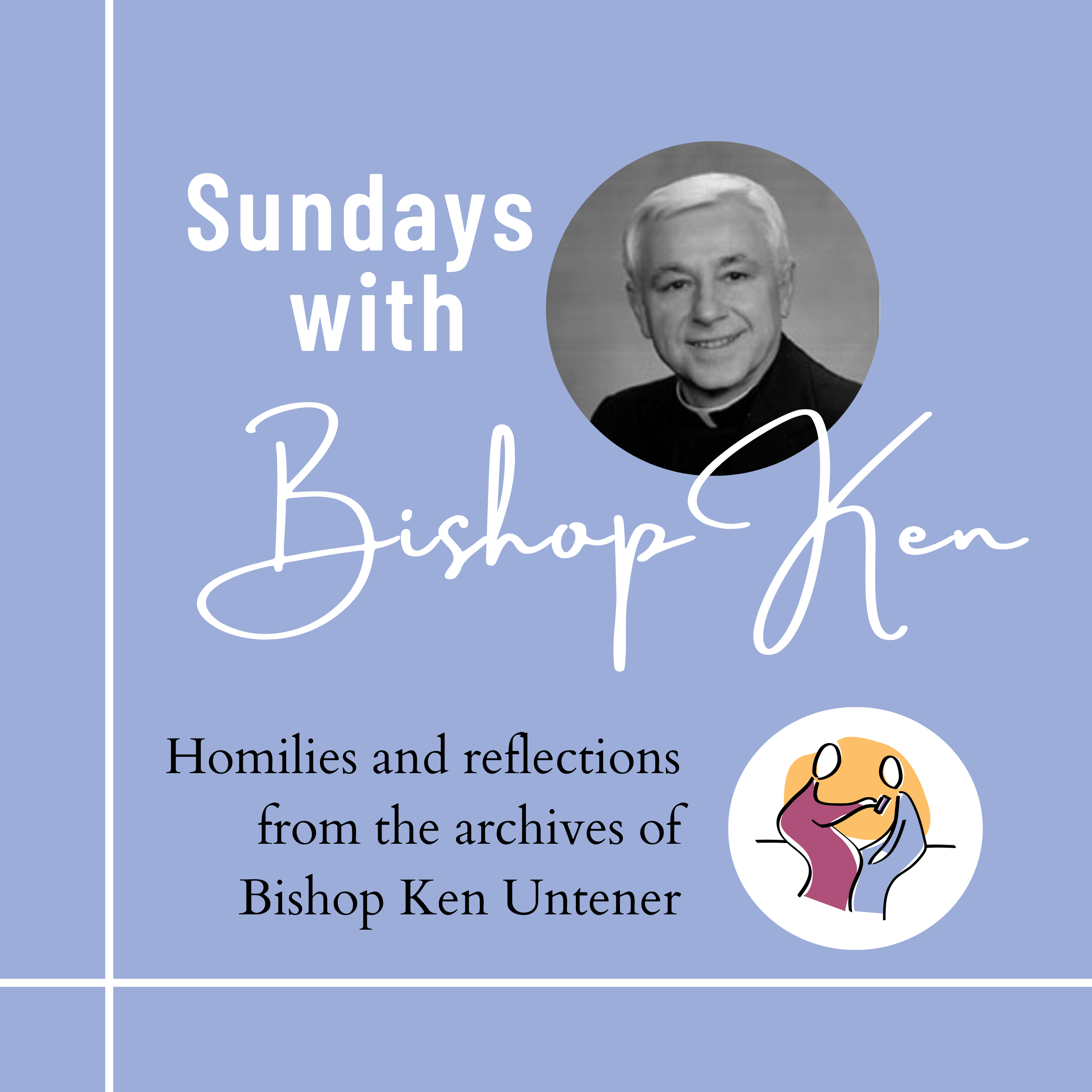Episode Transcript
[00:00:04] Welcome to Sundays with Bishop Ken, a weekly podcast brought to you by the publishers of Little Books of the Diocese of Saginaw.
[00:00:22] Each Sunday of Ordinary Time, the Gospel and Bishop Ken's homily are proclaimed by members of our faith community during the seasons of Advent, Christmas, Lent and Easter. Our Sunday prayer time will be taken from the Little Book's reflections for that season.
[00:00:44] We are pleased to spend this quiet time with you today.
[00:01:02] Welcome. Today is April 13th, Palm Sunday of the Passion of the Lord.
[00:01:19] We typically think of palm branches on Palm Sunday.
[00:01:23] Yet in many places around the world, palm branches haven't always been easy to gain access to.
[00:01:30] In their place, other branches and even flowers have been substituted.
[00:01:37] In Poland and other Slavic countries, the pussy willow, Salix kapria great willow, is part of today's celebration since palm trees aren't indigenous to Poland.
[00:01:52] According to Polish legend, Jesus visited a forest on Palm Sunday that was barren of leaves and flowers due to harsh winter conditions.
[00:02:03] Jesus instructed his angels to bring pussy willows into the woods, where they remain one of the first blooms of spring.
[00:02:14] Early during Lent, people today still bring pussy willow branches into their homes. They place them in water and wait for them to bloom so they can be used on Palm Sunday.
[00:02:27] On Easter Monday. In Poland, pussy willows are used in Dingus Day celebrations that mark the end of Lent.
[00:02:36] Pussy willows are a symbol for the resurrection and everlasting life.
[00:02:50] The holiest week of the year begins today.
[00:02:53] The world won't stop.
[00:02:56] Everything will go on.
[00:02:58] If I want this to be a holy week, what do I do?
[00:03:03] I decide.
[00:03:12] Over the course of Lent, we have discussed lectio divina, contemplation, liturgical prayer and meditation.
[00:03:22] Today we are going to expand on these traditional forms of prayer with active contemplation.
[00:03:30] We've looked at meditation and also at contemplation.
[00:03:35] There is a form of prayer between the two, referred to by different names. We'll call it active contemplation.
[00:03:45] Recall that meditation is using our power of reason to try to figure something out, not alone, but with God.
[00:03:55] Contemplation, as it was described last Sunday, is simply being with God, without words or thoughts.
[00:04:06] Active contemplation lies between the two.
[00:04:10] I pick any event in the Gospel. For example, the feeding of the crowd, Jesus at the house of Martha and Mary, the disciples with Jesus in the boat.
[00:04:23] And I place myself right there in the scene.
[00:04:27] I make the scene as real as possible.
[00:04:31] The sights, sounds, smells, the warmth, the cold, the voice inflections, the facial expressions.
[00:04:42] I'm sitting on the grass or in Martha's living room or in the bow of the boat.
[00:04:49] I watch the scene not from the outside, but from inside.
[00:04:55] The Lord may even speak to me or about me to others in the scene.
[00:05:01] I'm all eyes and ears, interested to see and be part of what happens.
[00:05:08] I let it unfold without pre planning it.
[00:05:13] As I watch and listen, I experience a whole range of reactions and emotions and that's it. I don't always have to come up with new resolutions or solutions.
[00:05:27] I just spend some time with the Lord and am the better for it.
[00:05:34] The events celebrated in Holy Week provide wonderful settings for this kind of prayer.
[00:05:41] The Last Supper, the washing of the feet, the events of the Passion.
[00:05:48] It might be just the kind of prayer I'm looking for.
[00:05:57] Spend some quiet time with the Lord.


